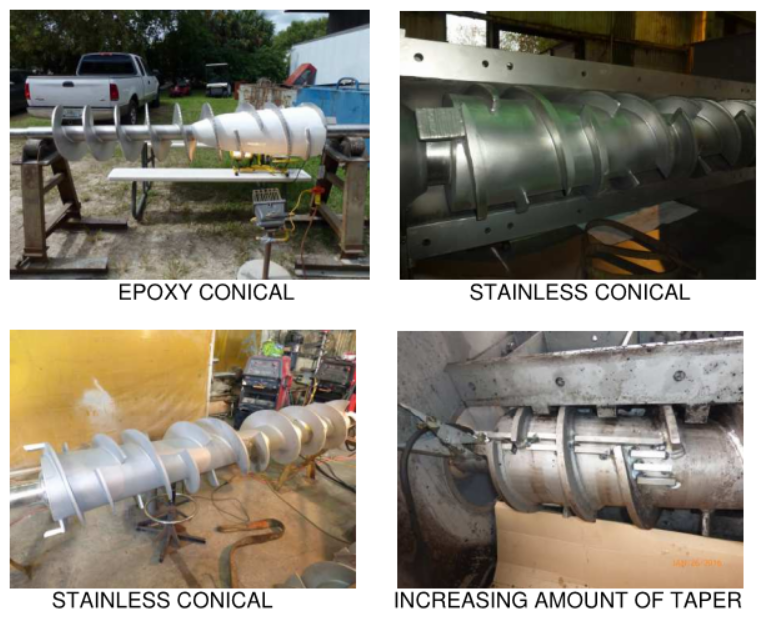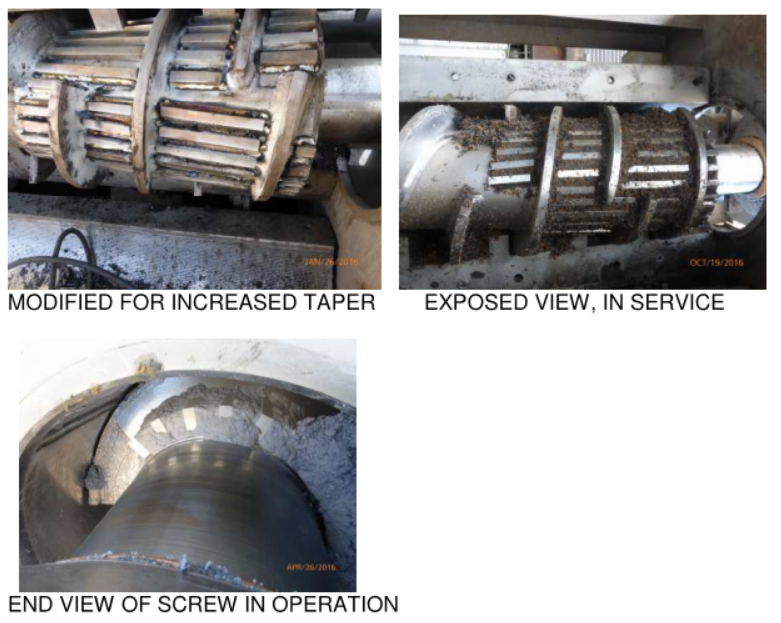January 17, 2017
It was eight years ago that Vincent engineers started serious experimentation with modifying screw shafts to achieve a conical shape. The idea was that changing a shaft from a cylindrical shape to a conical shape would increase the liquid removed by the screw. That is, the conical shape would push material outward against the screen as it progressed through the press.
We knew it would work because several competitors used tapered shafts, and Vincent had built VP-22 presses with step-shafts for a number of years. What we were after was (a) something which we could retrofit in the field when need be, and (b) something which could be manufactured at a low cost.
For our first tries we started with standard screws and built up the diameter to a conical shape using cement mortar. It worked well enough but it sure was not very professional looking. A couple times we even tried Bondo body putty, as used in the local automotive body shop. That experience led to using high performance epoxies. For food grade applications sanitary polyurethane was applied. These materials were fine for testing with presses from the rental fleet.
Soon we evolved to using stainless sheet or plate, formed to the proper conical radius and cut to fit. The design and technique is clever enough that today we offer these screws without changing the selling price of the presses.
The key design parameter for these conical screw shafts is the calculated reduction in the open cross sectional area at the cake discharge, compared to the original cross sectional area in the inlet hopper. Reductions of 45% to 72% have proven effective over a wide range of applications.
Because this was all new to us and we handle so many different applications, we needed a way to modify a screw in the field. Reducing the amount of taper proved very difficult. However going the other way was a lot easier. All we need to do is to weld some bars onto the conical portion of the screw shaft. The gaps between these bars fill with material, and increased dewatering is achieved. The photos below illustrate this modification.


